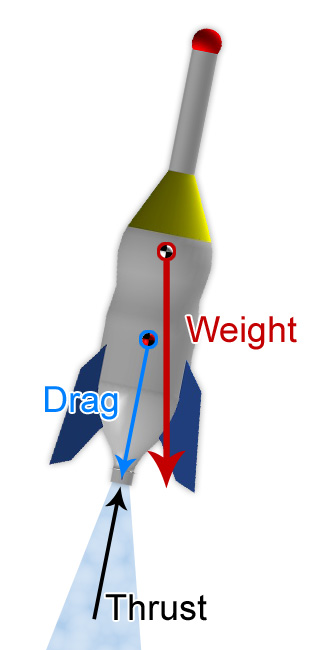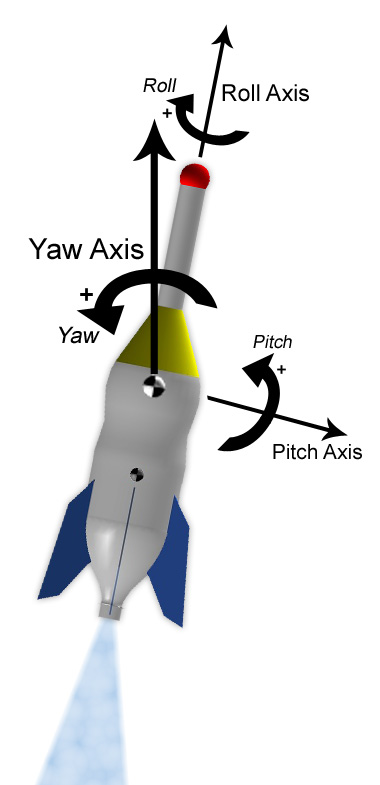Science of Rocketry
Humans have experimented with rockets for thousands of years. Out of this experimentation, we've developed numerous mathematical and scientific principles. These are principles, or "laws", that are applied to all rockets. The laws of physics determine how a rocket flies, including the thrust to achieve lift off, the ability to control the rocket's stability, and the success of recovering the rocket. Let's look at Newton's Three Laws of Motion. These laws were developed by Sir Isaac Newton and were first published in 1687. They explain the physics involved with objects and their motion, and they are heavily applied in aviation.
Newton's Three Laws of Motion
-
Every object persists in its state of rest or uniform motion in a straight line unless
it is compelled to change that state by forces impressed on it.
An object will remain still unless the object is affected by an external force. In other words, an object at rest will remain at rest unless acted on by an outside force. A rocket will not move unless an external force, in this case thrust, compels it to move. -
Force is equal to the change in momentum (mV) per change in time. For a constant mass, force
equals mass times acceleration (F=ma)
This law tells us that force is proportional to an object's mass and acceleration. So if we want our rocket to accelerate, we can increase force or reduce mass. -
For every action, there is an equal and opposite reaction.
Thrust is an excellent example of this law. The rocket's movement off the launch pad is a reaction to an action created by the motor. In the case of a water rocket, the rocket reacts to water being forced out of the bottle by moving in the opposite direction.
The Four Forces of Rocketry
There are four fundamental forces acting on a rocket: thrust, lift, weight and drag. All forces have a magnitude and direction. As you can see in the illustration, thrust moves the rocket forward, while weight and drag tend to oppose forward motion.
- Thrust acts through the center of gravity, and provided it can overcome the force of weight will propel the rocket forward (or upward).
- Weight acts through the center of gravity. Weight is related to mass but also includes gravity. Weight always pulls the rocket (and everything else on earth) towards the center of the earth.
- Drag acts through the center of pressure and is related to air density, velocity, and the shape of the rocket. Drag always opposes forward motion.
- Lift acts through the center of pressure. On a rocket, lift is a side force used to stabilize and control the direction of flight. This is quite different from the concept of lift as it relates to an airplane. On an airplane, lift is a force that overcomes weight to enable flight. In the Rockets application, we will simply discuss the concept of stability to avoid confusion.

Forces On A Rocket
Stability and Control
All rockets will rotate about their center of gravity during flight. A stable rocket will be able to recover from this rotation and return to its normal flight path. This rotation is typically characterized as roll,pitch, or yaw.
- Roll is a twisting motions about the roll (longitudinal) axis. Roll movement is not really a problem on a water rocket since it does not tend to alter the rocket's flight path.
- Pitch refers to an up and down movement of the rocket's nose. This movement can take the rocket off of its intended flight path and could result from a gust of wind. Careful attention to the location of the center of gravity and center of pressure will ensure pitch stability.
- Yaw refers to the side to side movement of the rocket's nose. This movement can take the rocket off of its intended flight path and could result from a gust of wind (very similar to pitch). Careful attention to the location of the center of gravity and center of pressure will ensure yaw stability.
